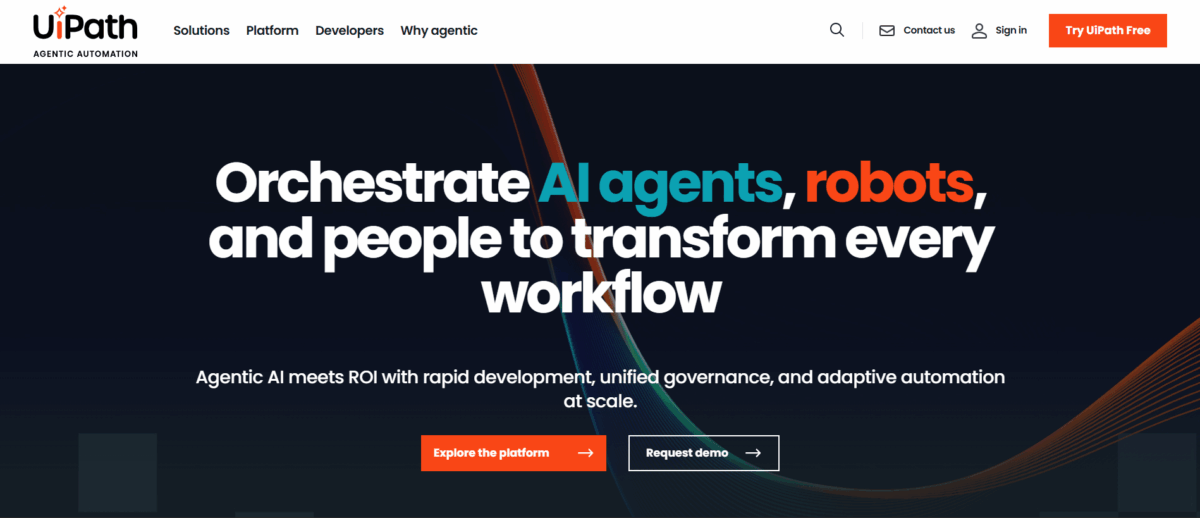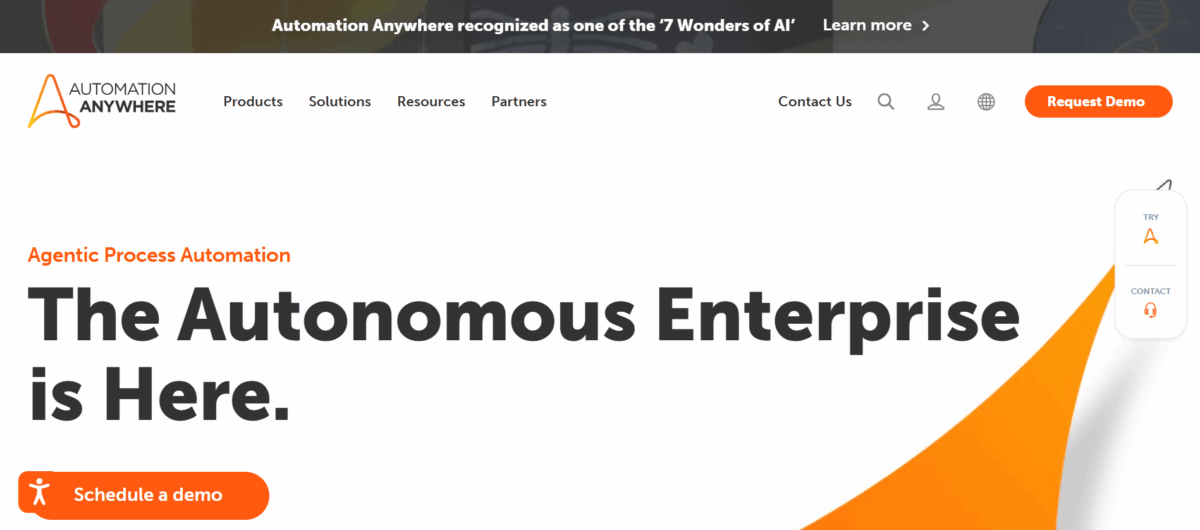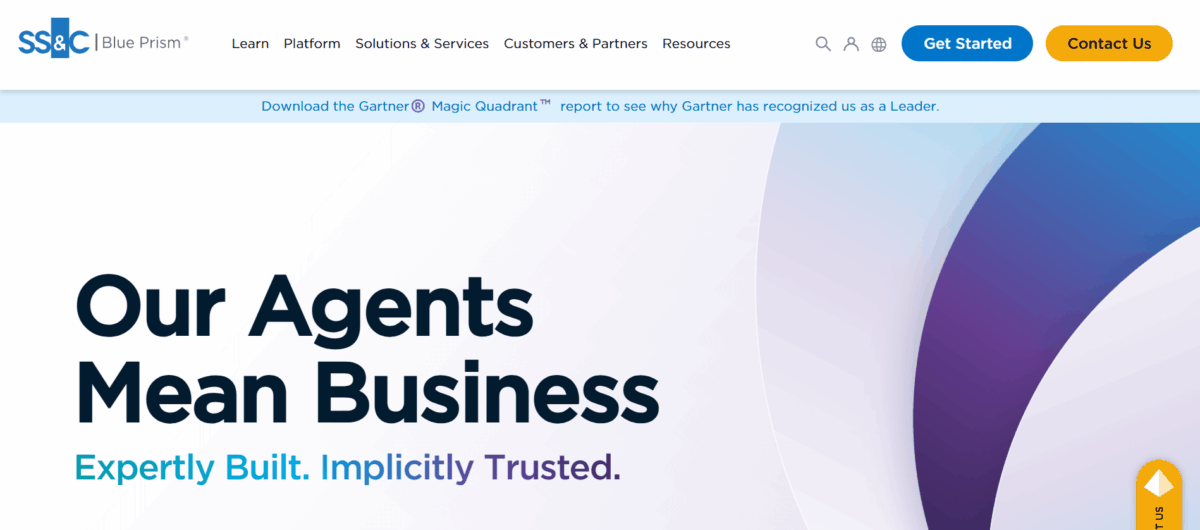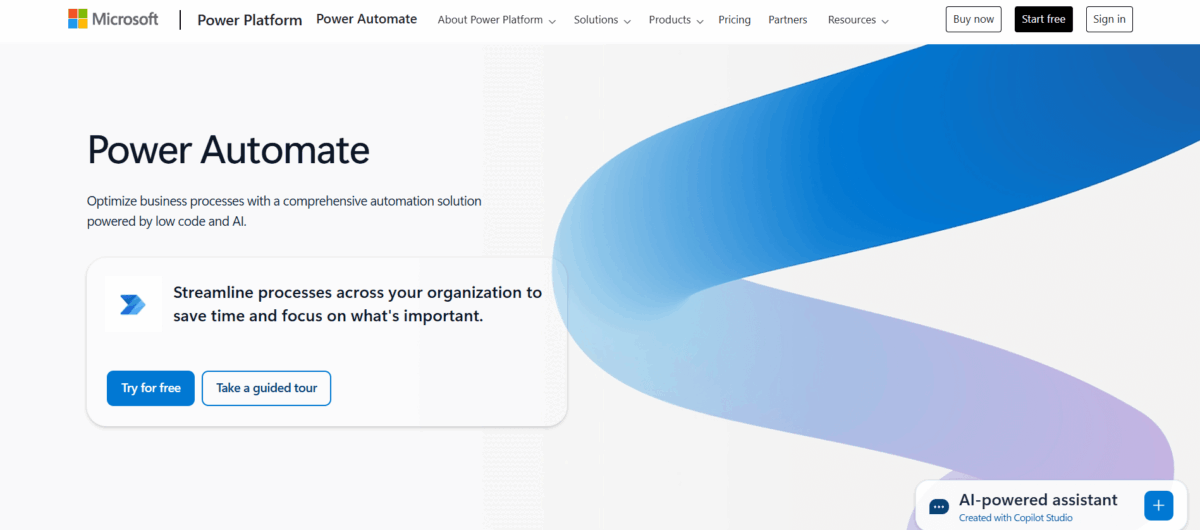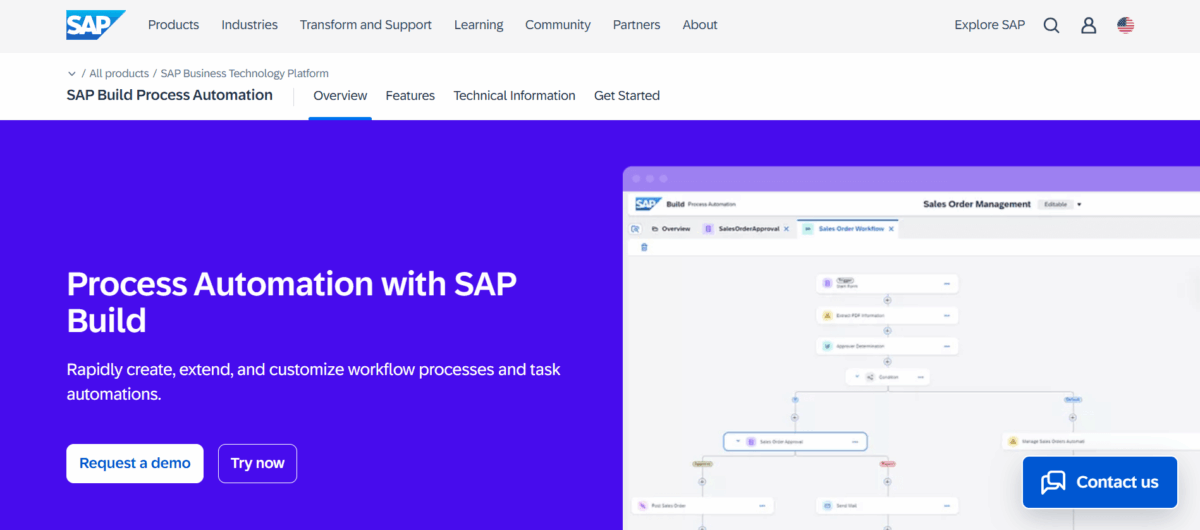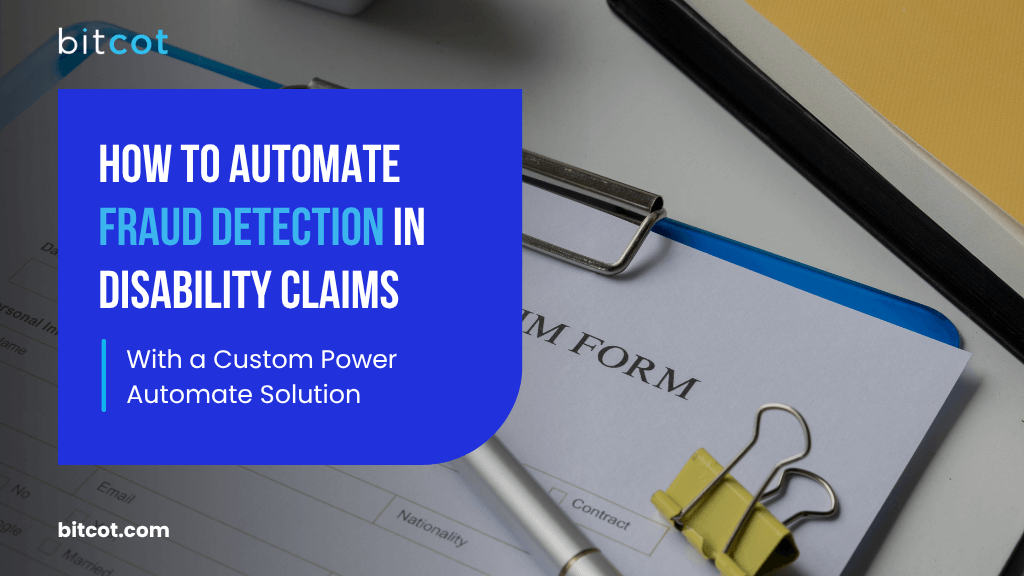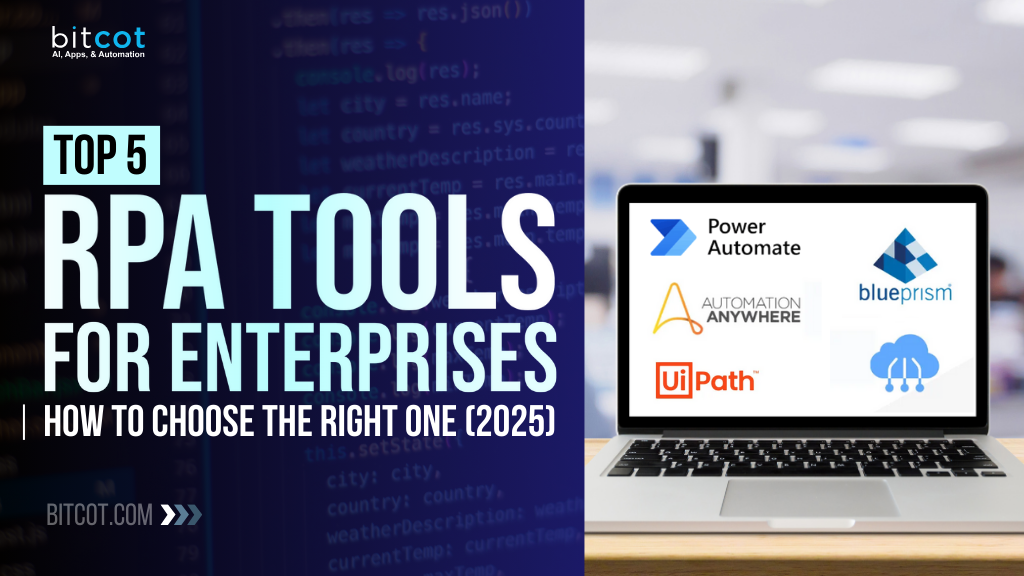
Think about the last time you or your team spent hours copying data between systems, updating endless spreadsheets, or chasing approvals that should’ve taken seconds.
Frustrating, right?
Now imagine if all of that “busy work” could quietly happen in the background while your employees focused on projects that actually drive growth. That’s exactly the promise of Robotic Process Automation (RPA).
Enterprises everywhere are adopting RPA to streamline operations, reduce human error, and scale faster without hiring armies of people.
But here’s the catch: the RPA market has exploded. In 2025, there are more options than ever before, each claiming to be the fastest, smartest, or most cost-effective. For a CIO or business leader, choosing the right tool can feel overwhelming.
That’s why in this article, we’ll walk you through the best RPA tools enterprises are relying on in 2025. We’ll look at what makes each tool stand out, where they shine, and what you should consider before making a decision. By the end, you’ll have a clear idea of not just which tools are leading the pack, but also how to choose the one that actually works for your business.
Why RPA Matters for Enterprises in 2025
Not too long ago, Robotic Process Automation (RPA) was considered a “back-office helper”, a way to handle tedious, repetitive tasks like invoice data entry or customer record updates.
Fast forward to 2025, and RPA has transformed into a strategic driver of enterprise efficiency and innovation. It’s no longer just about cutting costs; it’s about enabling enterprises to operate faster, smarter, and more competitively in a rapidly changing market.
Here’s why RPA has become a cornerstone of enterprise operations:
Scaling Without Scaling Headcount
Hiring more people isn’t always the answer, especially with rising labor costs and global talent shortages. RPA gives enterprises the ability to scale operations without proportionally increasing payroll.
A bot can process thousands of transactions in the time it takes an employee to complete a handful, working 24/7 without fatigue or downtime. For enterprises managing high transaction volumes (think banking, insurance, or retail), this is game-changing.
Accuracy, Compliance, and Risk Reduction
Enterprises often operate in heavily regulated industries where even small mistakes can snowball into major risks like financial penalties, reputational damage, or loss of trust.
RPA minimizes this risk by:
- Executing tasks with 100% consistency.
- Maintaining detailed logs of every action taken.
- Automatically flagging anomalies for review.
In 2025, advanced RPA systems also integrate directly with compliance frameworks, making it easier for enterprises to meet regulatory requirements and pass audits with confidence.
Empowering Employees, Not Replacing Them
One of the biggest misconceptions about RPA is that it replaces human jobs. The reality? It reshapes jobs. Employees spend less time on repetitive work, including copy-pasting, form-filling, and reconciliations, and more time on high-value activities like decision-making, customer engagement, and problem-solving.
This not only drives innovation but also improves employee morale. Instead of feeling stuck in monotonous tasks, people can focus on creative and strategic contributions that actually move the business forward.
Seamless Enterprise Integration
Today’s enterprises run on a patchwork of systems: ERP for operations, CRM for customer management, HR systems for people management, and countless cloud applications layered on top. RPA acts as the “digital glue” that ties all these systems together.
Modern RPA platforms don’t just mimic clicks and keystrokes; they integrate natively with leading enterprise software, ensuring smooth data flow, reducing silos, and creating a unified digital ecosystem. This level of connectivity is critical for enterprises that want to move quickly and respond to change without breaking their existing infrastructure.
AI-Driven Future-Readiness
The biggest leap in RPA over the past few years has been the infusion of artificial intelligence. Instead of being limited to rule-based tasks, modern RPA bots can now:
- Read and process unstructured data (like PDFs, emails, or scanned images).
- Learn from patterns and make predictive recommendations.
- Understand natural language inputs from users.
- Collaborate with AI/ML models to make smarter business decisions.
This convergence of RPA + AI (often referred to as Intelligent Automation) means enterprises are not just automating what they already do; they’re setting themselves up for entirely new ways of working.
Staying Competitive in a Disrupted Market
Competitors are no longer just other traditional enterprises; they’re nimble startups and AI-first companies that can deliver faster, cheaper, and more personalized services. Without automation, large enterprises risk being left behind.
RPA levels the playing field by giving enterprises the agility to adapt quickly, serve customers faster, and keep costs under control, all while maintaining the scale and reliability customers expect.
How We Evaluated the Top 5 RPA Tools
Choosing an RPA platform isn’t just about picking the one with the flashiest marketing or the biggest brand name. For enterprises, it’s about finding a solution that delivers real impact, scales effectively, and integrates seamlessly into existing workflows.
To cut through the noise, we evaluated the leading RPA tools based on seven key criteria that matter most in 2025:
1. Ease of Implementation
Time is money. We looked at how quickly organizations can get up and running with each tool, the learning curve for both business users and developers, and whether non-technical teams can create, manage, and monitor automations without heavy IT intervention. Tools that offer intuitive drag-and-drop interfaces, low-code options, and extensive pre-built templates scored higher.
2. Scalability and Performance
Enterprises need RPA platforms that don’t just handle a few processes but can scale to thousands of bots and transactions. We assessed how each tool performs under heavy workloads, whether it can manage concurrent tasks across multiple departments, and how easily it supports global deployments. Performance under real-world enterprise conditions was a major factor.
3. Integration Capabilities
Modern enterprises rely on a diverse ecosystem of software, including ERP, CRM, HR, finance, and cloud platforms. The ability of an RPA tool to integrate with existing systems, via native connectors, APIs, or custom adapters, is crucial. Tools that could connect seamlessly across multiple platforms without complex coding were rated higher.
4. Intelligence and AI Features
RPA in 2025 isn’t just about automating repetitive tasks; it’s about making smarter decisions. We evaluated tools on their ability to process unstructured data, use machine learning models, perform cognitive document processing, and support natural language interactions. The stronger the AI integration, the more future-proof the platform.
5. Governance, Security, and Compliance
Enterprises need peace of mind. We looked at role-based access controls, audit trails, regulatory compliance support, and enterprise-grade security features. Tools that offered centralized monitoring, robust logging, and strong governance dashboards scored highest for organizations in heavily regulated industries like finance, healthcare, and insurance.
6. Cost and Licensing Flexibility
Pricing models vary significantly, from per-bot licenses to subscription or consumption-based plans. We compared the total cost of ownership, including licensing, implementation, training, and ongoing maintenance. Platforms that offer flexible licensing and predictable costs for scaling enterprises earned top marks.
7. Vendor Support and Ecosystem
Even the best technology is only as good as the support behind it. We assessed each vendor’s training resources, customer support responsiveness, availability of consulting partners, and community ecosystem. Tools with robust support and strong partner networks provide enterprises with smoother implementation and long-term success.
What are the Top 5 RPA Tools for Enterprises in 2025?
After evaluating the leading RPA platforms based on implementation ease, scalability, AI capabilities, integration, governance, cost, and support, five tools clearly stand out in 2025. Each brings unique strengths, and the “best” choice depends on your organization’s priorities, tech stack, and automation goals.
Let’s explore them one by one.
#1 – UiPath
UiPath remains a market leader thanks to its comprehensive, enterprise-ready automation suite. It combines an intuitive interface with advanced AI capabilities, making it suitable for business users.
Key Features:
- User-Friendly Interface: Drag-and-drop workflow designer for non-technical users.
- AI-Powered Automation: Handles unstructured documents, interprets emails, and integrates ML models seamlessly.
- Scalability: Supports thousands of bots and processes globally.
- Integration: Works with ERP, CRM, cloud apps, and legacy systems.
- Governance & Compliance: Enterprise-grade security, audit trails, and role-based access.
Best For: Enterprises seeking robust, scalable automation with strong AI integration.
It’s worth noting that UiPath has been recognized as a Leader in the Magic Quadrant™ for RPA for the seventh consecutive time.
#2 – Automation Anywhere
Automation Anywhere offers a cloud-first approach, delivering flexibility and agility for modern enterprises. Its focus on AI-powered document processing and high-volume workflows sets it apart.
Key Features:
- Cloud-Native Platform: Easy deployment and scaling without heavy infrastructure.
- Cognitive Automation: Processes unstructured data and supports intelligent decision-making.
- Bot Marketplace: Pre-built bots accelerate implementation.
- Security & Compliance: Enterprise-grade monitoring, governance, and controls.
- Collaboration: Business and IT teams can collaborate seamlessly.
Best For: Enterprises managing high-volume, data-intensive processes with a need for cloud scalability.
#3 – Blue Prism
Blue Prism is renowned for its enterprise-grade governance and reliability, making it a preferred choice for highly regulated industries like finance, healthcare, and insurance.
Key Features:
- Strong Security & Compliance: Detailed audit trails and enterprise-grade governance.
- Scalable Architecture: Handles complex, global deployments.
- Integration: Connects with legacy and modern enterprise systems.
- AI Integration: Supports cognitive automation, though less intuitive than some competitors.
- Vendor Support: Strong partner ecosystem for consulting and deployment.
Best For: Enterprises that prioritize compliance, security, and reliability over low-code simplicity.
#4 – Microsoft Power Automate
Microsoft Power Automate is ideal for enterprises already embedded in the Microsoft ecosystem, offering seamless integration with Microsoft 365, Dynamics 365, and Azure.
Key Features:
- Deep Microsoft Integration: Works natively with Teams, Outlook, SharePoint, and Dynamics 365.
- Low-Code Design: Enables business users to automate tasks without heavy IT support.
- AI Builder: Integrates AI models for document processing, predictions, and decision-making.
- Cloud & On-Premises Deployment: Flexible operation across environments.
- Cost-Effective: Attractive for organizations already using Microsoft subscriptions.
Best For: Enterprises seeking cost-effective, Microsoft-integrated automation with citizen developer support.
#5 – SAP Build Process Automation
SAP Build Process Automation (formerly SAP Intelligent RPA) is tailored for enterprises running SAP systems, allowing automation of complex ERP workflows without disrupting operations.
Key Features:
- Native SAP Integration: Automates SAP workflows seamlessly.
- Low-Code Automation: Enables collaboration between business users and IT teams.
- Cognitive Capabilities: Handles document processing, approvals, and decision tasks.
- Governance & Security: Audit trails, role-based access, and enterprise monitoring.
- Scalable Across SAP Landscapes: Ideal for global SAP deployments.
Best For: Enterprises deeply embedded in SAP environments aiming to automate ERP and critical business processes.
Which Enterprise RPA Tool is Best for You?
Once you’ve identified the top RPA vendors, the real challenge is choosing the platform that fits your organization’s unique needs. Each enterprise has different priorities, systems, and goals, so there is no universal “best” tool.
Instead, the right choice depends on a careful evaluation of business requirements, technical compatibility, and long-term scalability.
Below are the key dimensions to guide your decision-making:
Business Alignment and Use Case Fit
- Define objectives first. Are you focused on cost reduction, compliance, customer experience, or workforce productivity?
- Match tools to goals. For example, UiPath or Automation Anywhere may suit enterprises seeking AI-rich automation, while SAP Build Process Automation is often the natural fit for SAP-driven workflows.
- Start with high-impact use cases. Assess whether the vendor supports quick wins (like invoice automation) as well as long-term, enterprise-wide deployments.
Scalability and Enterprise Readiness
- Capacity to grow. Look for centralized orchestration, load balancing, and high availability to support thousands of bots.
- Cloud vs. on-premises. Cloud-first solutions like Automation Anywhere offer agility, while on-premise or hybrid setups may be essential for regulated industries.
- Future-proofing. Ensure the platform can evolve with your automation maturity and support advanced integrations over time.
Integration with Your Tech Stack
- Ecosystem fit matters. Enterprises heavily invested in Microsoft 365 or Dynamics will benefit from Power Automate. Similarly, SAP-centric organizations should consider SAP Build Process Automation.
- Third-party systems. Evaluate how well the tool connects with ERPs, CRMs, legacy systems, and APIs.
- Pre-built connectors and bot libraries. These reduce deployment time and accelerate time-to-value.
Governance, Security, and Compliance
- Risk management. Enterprises in finance, healthcare, or government must prioritize strong governance. Blue Prism is known for its enterprise-grade controls.
- Access controls and auditability. Look for role-based access, detailed logging, and compliance certifications (GDPR, HIPAA, SOX, ISO).
- Data protection. Verify support for encryption, secure credential storage, and adherence to industry-specific regulations.
AI and Cognitive Capabilities
- Structured vs. unstructured data. If your processes involve documents, emails, or images, choose a platform with AI-powered document understanding (e.g., UiPath Document Understanding or Automation Anywhere’s IQ Bot).
- Decision-making support. Advanced AI/ML integrations can move automation from simple task execution to intelligent decision support.
- Future AI integration. Ensure the vendor has a roadmap for AI advancements like generative AI, NLP, and computer vision.
Ease of Use and Adoption
- Low-code/no-code options. Low-code development tools like Power Automate make automation accessible to citizen developers, while others require more technical expertise.
- Training and onboarding. Check if the vendor offers certifications, tutorials, and a strong knowledge base.
- User experience. An intuitive interface accelerates adoption and reduces reliance on IT teams.
Total Cost of Ownership (TCO)
- Licensing models. Compare subscription vs. perpetual pricing and whether costs scale per bot, per user, or per process.
- Hidden costs. Factor in infrastructure, support, consulting, and training expenses.
- ROI measurement. Choose a platform with analytics and dashboards that make ROI tracking transparent.
Vendor Support and Ecosystem Strength
- Customer support. Round-the-clock technical support and quick response times are critical for enterprise stability.
- Community and partners. A strong ecosystem of implementation partners, consultants, and third-party developers can accelerate success.
- Innovation roadmap. Assess whether the vendor is actively investing in AI, integration, and global scalability to ensure long-term relevance.
Here’s a comparison of the top five RPA tools for enterprises to help you decide.
| Criteria | UiPath | Automation Anywhere | Blue Prism | Microsoft Power Automate | SAP Build Process Automation |
| Best For | Enterprises seeking robust, scalable automation with advanced AI | Cloud-first enterprises managing high-volume, data-heavy processes | Highly regulated industries (finance, healthcare, insurance) | Organizations embedded in the Microsoft ecosystem | SAP-centric enterprises automating ERP and business workflows |
| Ease of Use | Intuitive, strong low-code support | Business-friendly with bot marketplace | Less intuitive; designed for IT-driven deployments | Very user-friendly; ideal for citizen developers | Moderate; designed for IT + business collaboration |
| AI & Cognitive Capabilities | Strong AI (document understanding, NLP, ML integration) | Advanced AI with IQ Bot for unstructured data | Solid AI add-ons but less native than UiPath/AA | AI Builder for document processing & predictions | AI for documents, approvals, and SAP decision tasks |
| Scalability | Enterprise-grade; supports thousands of bots | Cloud-native, highly scalable | Proven large-scale deployments, esp. in regulated industries | Scalable within the Microsoft ecosystem | Scales across SAP landscapes globally |
| Integration Strength | Broad integration (ERP, CRM, cloud, legacy apps) | Wide integrations; API-first | Strong enterprise system integration | Deep native integration with Microsoft 365 & Dynamics | Native SAP integration; good for ERP-heavy enterprises |
| Governance & Compliance | Enterprise-grade (audit trails, RBAC, certifications) | Strong monitoring and compliance tools | Market leader in governance/security | Good but less robust than Blue Prism | Strong governance for SAP-centric compliance needs |
| Cost & Licensing | Mid-to-high; subscription-based | Flexible subscription, cost-effective in the cloud | Premium pricing; higher TCO | Cost-effective (especially with existing Microsoft licenses) | Competitive for SAP customers; less so outside SAP |
| Vendor Ecosystem & Support | Large global community, strong partner network | Strong ecosystem, bot marketplace | Deep partner support, esp. consulting firms | Microsoft ecosystem, large developer community | SAP partner ecosystem, best for SAP clients |
Partner with Bitcot for Custom Enterprise RPA Solutions
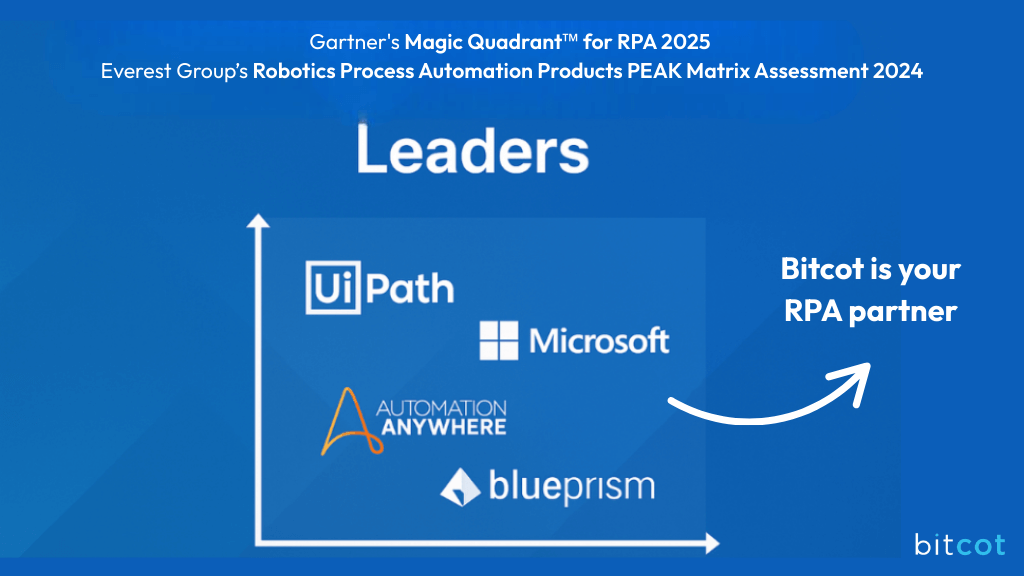
Choosing the right RPA tool is only the beginning; real success comes from tailoring, implementing, and scaling automation to fit your enterprise. That’s where Bitcot delivers value. We bring together deep technical expertise, domain knowledge, and a consultative approach to help you unlock the full potential of RPA.
Here’s why enterprises choose Bitcot for robotic process automation:
- Platform-Agnostic Expertise: Bitcot is not tied to a single vendor; we have expertise in major industry-leading RPA tools like Power Automate. We recommend the platform that best aligns with your business environment, rather than forcing you into one ecosystem. Our goal is to ensure flexibility, scalability, and long-term ROI no matter which platform you choose.
- Custom Workflow Design: Every enterprise has unique processes that can’t always be solved with off-the-shelf automation. At Bitcot, we map your workflows in detail, identify bottlenecks, and design RPA bots that are purpose-built for your business challenges. From insurance and HR to logistics and education, our tailored approach ensures automation fits seamlessly.
- Seamless Integration: RPA must work with your ERP, CRM, legacy software, and cloud applications. Bitcot specializes in creating smooth integrations that connect bots with your existing systems without causing disruption. This ensures continuity, minimizes downtime, and enables your automation investment to drive enterprise-wide efficiency.
- AI-Enhanced Automation: We go beyond simple task automation by embedding AI and cognitive capabilities into RPA solutions. Using NLP, ML, and intelligent document processing, we help bots handle unstructured data and make context-aware decisions. This enables enterprises to unlock new automation opportunities that go beyond repetitive tasks.
- Governance and Compliance: Security and compliance are non-negotiable in enterprise environments, and Bitcot builds governance into every project. Our solutions feature role-based access, detailed audit trails, and regulatory adherence frameworks such as GDPR, HIPAA, and SOX. This ensures your automation program is enterprise-grade from day one.
- End-to-End Support: Bitcot doesn’t just deploy bots; we partner with you across the entire automation journey. From discovery and proof of concept through large-scale deployment and continuous optimization, we provide ongoing support and training. This ensures your teams are empowered, your ROI is measurable, and your automation strategy remains future-ready.
By partnering with Bitcot, enterprises gain more than automation; they gain a trusted advisor for digital transformation. Our holistic approach ensures your RPA strategy is not just implemented, but sustained and evolved over time. With faster ROI, improved compliance, and future-ready scalability, Bitcot helps you build automation solutions that deliver real business impact.
Final Thoughts
RPA isn’t just about bots; it’s about giving your teams the freedom to focus on the work that really matters.
In 2025, the leading tools each bring something unique to the table, but the “best” one for your business depends on your goals, your systems, and where you are in your automation journey.
Think of it this way: if your company is Microsoft-heavy, Power Automate may feel like a natural fit. If you run everything on SAP, then SAP Build Process Automation might be the obvious choice. For enterprises that want advanced AI, UiPath and Automation Anywhere shine. And for industries where compliance is non-negotiable, Blue Prism is often the safer bet.
At the end of the day, choosing an RPA platform is less about chasing features and more about finding the right match for your business. The tool should scale with you, integrate smoothly with your tech stack, and deliver real impact without adding complexity.
And if you’re wondering how to put it all together, including strategy, tools, integrations, and governance, this is exactly where Bitcot can help. We partner with enterprises to design custom RPA solutions that don’t just automate tasks, but truly transform the way you work.
Get in touch with us.

